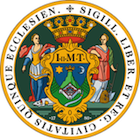Main Sponsors
-
 Reiso Pécs
Reiso Pécs -
 Hotel Lycium****
Hotel Lycium**** -
 Pécs ZOO
Pécs ZOO -
 http://www.mecsekegyesulet.hu/
http://www.mecsekegyesulet.hu/ -
Doro Ékszer
-
 Hetényi Pincészet
Hetényi Pincészet -
 Zsályaliget Élménypark
Zsályaliget Élménypark -
 Fabrik Barkács Szaküzlet
Fabrik Barkács Szaküzlet -
 Katica tanya
Katica tanya -
 E.ON Hungary
E.ON Hungary -
 http://www.ipark-pecs.hu/
http://www.ipark-pecs.hu/ -
 https://www.otpbank.hu/otpklub/Fooldal
https://www.otpbank.hu/otpklub/Fooldal -
 http://www.pecsibalett.hu/hindex.html
http://www.pecsibalett.hu/hindex.html -
 www.lakics.hu
www.lakics.hu -
 Gépszer
Gépszer -
 http://www.kormany.hu/hu/emberi-eroforrasok-miniszteriuma
http://www.kormany.hu/hu/emberi-eroforrasok-miniszteriuma -
 http://www.pnsz.hu/
http://www.pnsz.hu/ -
 http://www.pecs.hu/
http://www.pecs.hu/ -
 Mischl Autóház
Mischl Autóház -
 Öko-Trade Ltd
Öko-Trade Ltd -
 Bóly and Vicinity Savings Bank
Bóly and Vicinity Savings Bank -
 Mecsekerdő Forestry Ltd
Mecsekerdő Forestry Ltd -
 http://www.deltakarek.hu/
http://www.deltakarek.hu/ -
 University of Pécs
University of Pécs -
 http://kloe.hu/
http://kloe.hu/ -
 http://www.lafarge.hu/
http://www.lafarge.hu/ -
 http://www.gondoldo.hu/
http://www.gondoldo.hu/


Festive Gala Concert
15 Mar 2016. 19:00 | Kodály Centre
For Grown-Ups |
- Liszt Ferenc: Funérailles
- Bartók Béla: Kossuth Symphony
- Liszt Ferenc: 'Mazeppa' - Symphonic Poem no. 6
Programme
Orchestra
Pannon Philharmonic OrchestraConductor

Zoltán Kocsis
Zoltán Kocsis was born in 1952 in Budapest, began playing the piano at age five. From 1963, he studied piano and composition at Béla Bartók Vocational Secondary School of Music; and then he got admitted to Franz Liszt Music Academy in 1968 as a student of Pál Kadosa and… More
About the Programme
"In the Hungarian history, 1848 is one of the most remarkable years: the Hungarian War of Independence, a life-and-death struggle, with the aim of terminally getting rid of the rule of the Austrians and the Hapsburg dynasty, broke out that year. The leader and the soul of the Revolution was Lajos Kossuth." Béla Bartók justified with these lines why he had chosen one of the most important Hungarian politicians of the 19th century as the title character of his symphony. Despite its title, this youth work of him is not a traditional symphony, but a "symphonic poem"; the composer, who, at that time showed a lot of interest for Richard Strauss's compositions written in this genre identified his in 1903 completed work as such. According to the appended programme, the Kossuth Symphony matches ten parts that are closely related. Each part is explained in the score, too; from them emerges the tragic story of the War of Independence: from the start and Kossuth’s words for calling in battle down to the final defeat and mourning.























